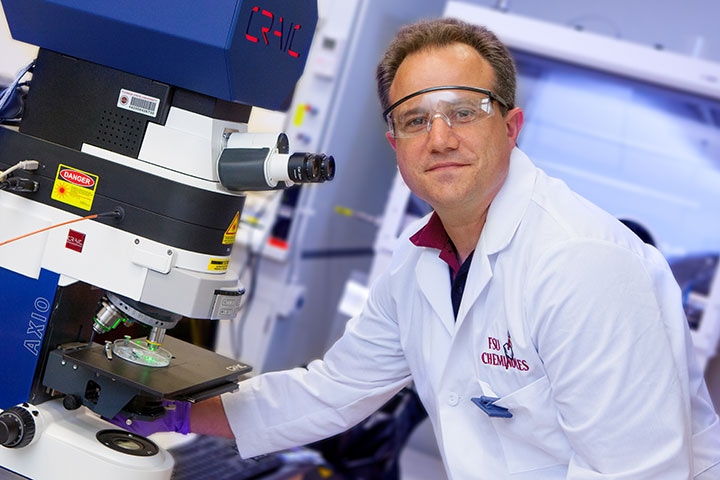May 9 2017
Plutonium has played a significant role in nuclear energy strategies of many countries for a prolonged time period. However, scientists are still exploring the mysteries behind this complicated element and studying how they can clean up nuclear waste by using heavier, nuclear elements.
 Thomas Albrecht-Schmitt, professor of chemistry. Credit: Florida State University
Thomas Albrecht-Schmitt, professor of chemistry. Credit: Florida State University
Professor Thomas Albrecht-Schmitt, from Florida State University, recently presented research demonstrating that plutonium does not exactly work the way scientists believed it would. The findings will contribute to the efforts taken by the team to develop technologies that help clean up nuclear waste.
The work was recently published in Nature Chemistry.
For almost two decades, Albrecht-Schmitt and a team of researchers have been studying plutonium, in order to understand how it acts chemically and also how it differs from lighter elements like nickel or iron. To Albrecht-Schmitt’s surprise, a plutonium-organic hybrid compound assembled in the lab by his team behaved almost like compounds made with lighter elements.
What makes this discovery so interesting is that the material — rather than being really complicated and really exotic — is really, really simple. Your imagination goes wild and you think ‘Wow, I could make that class of compound with many other types of heavy elements.’ I could use other heavy elements like uranium or maybe even berkelium.
Professor Thomas Albrecht-Schmitt, Florida State University
The researchers observed that the electrons were in fact shuttling back and forth between two varied plutonium ions. The movement of electrons between two positive ions refers to an action that typically occurs between ions of lighter elements like iron. This is the reason why lighter elements are mostly used in biology to achieve chemical reactions.
Albrecht-Schmitt said his team instantly understood that there was something unique about the compound engineered by them in the lab just because of its color.
“Plutonium makes wild, vibrant colors. It can be purple, it can be these beautiful pinks. It can be this super dark black-blue. This compound was brown, like a beautiful brown chocolate bar. When we saw that color, we knew something was electronically unusual about it.”
Professor Thomas Albrecht-Schmitt, Florida State University
Albrecht-Schmitt’s work is part of his lab’s goal to improve the understanding of the heavier elements at the very bottom of the periodic table. In 2016, Albrecht-Schmitt received $10 million from the Department of Energy to develop a new Energy Frontier Research Center that would concentrate on speeding up the scientific efforts to clean up nuclear waste.
Albrecht-Schmitt and his research team have performed similar work on the elements berkelium and californium.
Other authors on the paper are FSU graduate students Samantha Cary, Shane Galley, Matthew Marsh, Justin Cross and Jared Stritzinger; FSU research professor David Hobart; National High Magnetic Field Laboratory researcher Ryan Baumbach; Bloomsburg University Assistant Professor of Chemistry Matthew Polinski and Laurent Maron of the Institut National des Sciences Appliquées in Toulouse, France.
The U.S. Department of Energy funded the work.